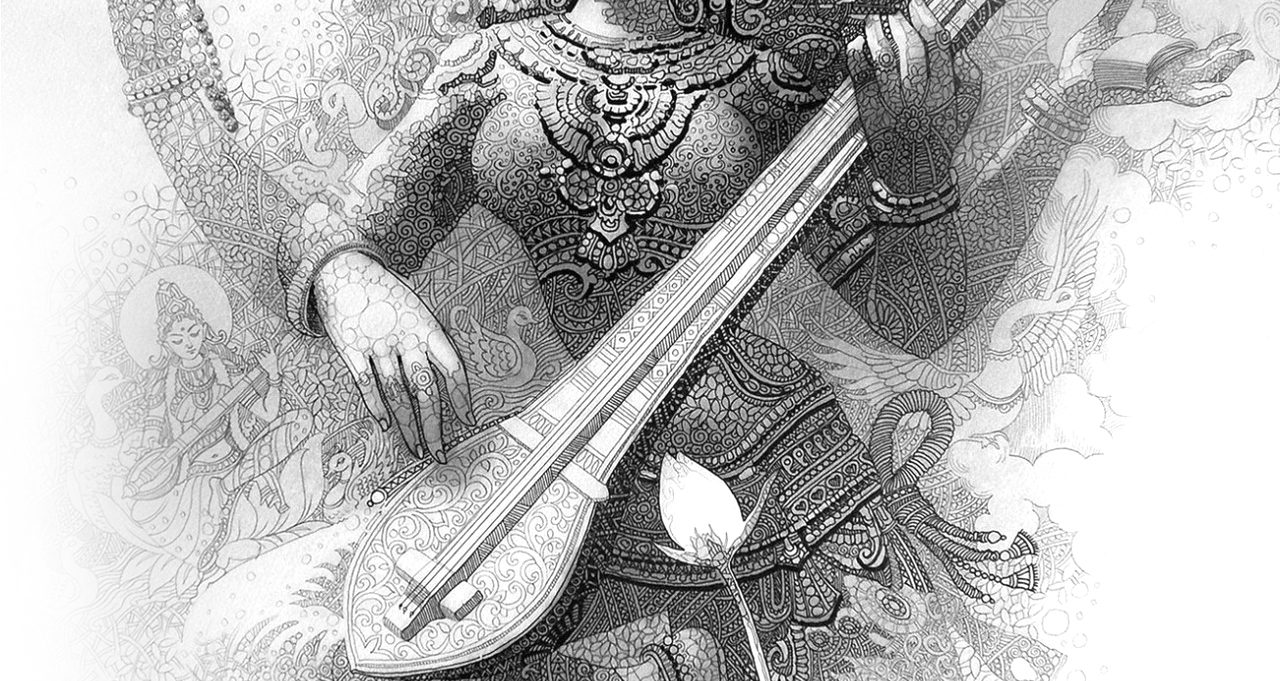PRITHVIRAJ THALI
Hinduism is perhaps one of the few faiths which boasts about the worship of the sacred feminine. As the force that bears the seed of life, the feminine element is revered and accorded the highest stature through the millennia. Though the Absolute is perceived as undifferentiated and unqualified, the creation of the entire cosmos, both conceptual as well as its resultant physical manifestation, is attributed in Hindu scriptures to the primordial interplay of Shiva, the male element which represents the passive consciousness that is essentially self-absorbed and its divine consort Shakti, the personified creative power of Shiva. Shakti, thus, represents the dynamic aspect of Shiva.
The Divine Trinity – Brahma the Creator, Vishnu the Preserver and Shiva the Destroyer — are represented on the material plane in their active aspects in the forms of their consorts Saraswati, Laxmi and Parvati respectively. While the Absolute is embodied as Divine Justice in the male trinity, their feminine embodiments represent its aspect of Divine Mercy. Human procreation, on the terrestrial plane, thus follows the archetypal function of the Absolute in its twin aspects of Shiv and Shakti. In this sense, all creation is thus feminine as it cannot self-exist without the unborn, ever-existing Absolute which being the only male reality. On the individual level, the relation of the human soul with Atma (the Universal Spirit) is only a microcosmic representation of the macrocosmic co-existence of Shiv – the Creator and Shakti – the created.
The Hindu thought uniquely centres on the worship of the Goddess as the giver of life and material abundance. Virtues such as valour, bravery and profound intelligence, that are stereotypically associated with men in other faiths, are conceived as innately feminine. There are records of able women in the roles of preceptors and warriors in classical Hindu texts, which admirably reveal that Hindu thought, despite being wondrously polytheistic, still rightfully accords the highest status to the feminine. While Goddess Laxmi, Vishnu’s divine consort is worshipped for wealth and abundance, Goddess Saraswati is said to bestow learning and wisdom upon her devotee. Parvati, Shiva’s consort, is the Goddess of strength and power, and also said to bestow fertility, love and devotion.
Philosophic thought and ritualistic traditions are indistinguishably intertwined in Hinduism. Ideas and nature also find their most eloquent expressions in the forms of numerous other goddesses. For instance, Aditi is the protective Goddess of space and infinity, who helps overcome obstacles, while Agneya is the daughter of the Fire God Agni. Chhaya is the Goddess of shadows and the consort of Surya, the Sun God. Maya is the Goddess of illusion and represents the manifested world. Goddess Durga, another prominent Hindu deity, is a fierce, demon fighting Goddess. She is honoured during the festival of Navratri, which is celebrated over a span of nine nights. She is said to have killed the demon Mahishaasur after a fierce battle, earning her the title of ‘Mahishaasur-Mardini’, literally meaning, ‘killer of Mahishaasur’. Though the festival is celebrated differently in different parts of India, the theme of battle and eventual victory of good over evil is common to all of them.
The symbolism of Navratri is strikingly pertinent to and reflective of our domestic plane. Battle implies strife, conflict and disharmony as necessary prerequisites. This necessitates the acknowledgement of the presence of the unnecessary, the unwanted and the evil which needs purging. Durga is perceived as that divine agent which brings about this purging. It is the ever sane voice of conscience within the mad cacophony of confusion and chaos in us. Thus, the nine-day celebration symbolically enacts the subtle drama of victory of the good over the long-reigning demons of baser sense tendencies. Discrimination and discernment are Durga’s sword with which she cuts through the dross of human nature. She bestows us with ‘seeing eyes’ which perceive the true nature of this world and our role in it.
Saints and mystics of India have been known to worship and behold the divine in the form of Divine Mother. The lives of Shri Ramkrishna Paramhansa and Swami Vivekananda are exemplary in this respect. The divine feminine represents archetypal female qualities such as insight, receptivity, acceptance, surrender and empathy. It has nothing to do with the distorted psyche which believes and projects the feminine as weaker or inferior to its more aggressive male twin. Durga’s truest representation dwells in every compassionate thought and every benevolent act that promotes well-being and virtuousness. She is the voice of virtue and the power of reason. She resides in the loving hand of a mother as she embraces her child. Durga is that woman who bestows health and happiness as she devotes herself to her family and nurtures them. She is also the one who surmounts innumerable obstacles and sacrifices effortlessly for the good of her dear ones. She is seen personified in all walks of life where women have made their mark.
I am reminded of the moving poem by William Ross Wallace who celebrates the feminine when he says, “… For the hand that rocks the cradle; is the hand that rules the world”. May the festival invoke in us Goddess Durga in the form compassion, receptivity, understanding, insight and surrender.



























